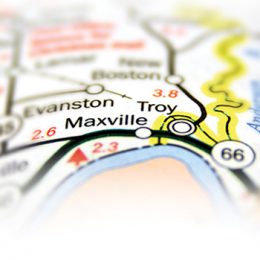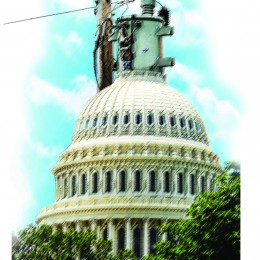 Every autumn, memories of my glory days as a high school cross country runner come jogging back. But with them always comes a dull nagging pain right about now.
Every autumn, memories of my glory days as a high school cross country runner come jogging back. But with them always comes a dull nagging pain right about now.
Early November is when the state cross country meet is held. My two appearances in the state meet in 1978 and 1979 left me disappointed and empty. My best finish was 40th, but I was expecting better.
When I competed, the state meet was held at a golf course in Speedway. The race course was the cross-country cousin to the famed 2.5-mile oval just up the street. It was flat and fast.
I grew up at the base of the spiny south-central Indiana uplands the glaciers missed. They didn’t call our course “Hoosier Heights” for nothing. It was all up and down. I was flexible enough to compete on the flats, but my legs had a hard time getting into high gear. I was most effective on the hills. The closest thing to a hill on the state course at Speedway was the embankment of a bunker.
I’m reminded of my unfortunate state cross country course of events now as preparations for the 2009 session of the Indiana General Assembly begin in earnest. Mandates for renewable portfolio standards probably will be back on the agenda. Various RPS proposals would require utilities to add a growing percentage of renewables to the mix of power they supply to Hoosier consumers.
But just as runners do not always match up equally to the course before them, renewable energy sources do not always match up equally around the country. Because of differences in geology, geography and climate, one size, one mandate, does not fit all.
Solar energy, most effective in the Southwestern United States, and wind power, most effective in Texas, the Great Plains and coastal areas, may not be the most effective or economical ways to reduce carbon dioxide emissions — the stated purpose of the standards — here in Indiana. Yet, some folks pushing mandates tout only these renewables and want to stop there.
Indiana’s consumer-owned, consumer-led electric cooperatives embrace flexibility in meeting carbon constraints. Mandates not only limit alternatives and stifle innovations, they inflate the costs of the chosen sources.
While wind and solar need to be part of our energy mix, especially as their technology continues developing and their efficiencies improve, Indiana cannot limit our solutions when it comes to cutting carbon. If we do, we will be sorely disappointed in the results.
The U.S. Department of Energy, for example, has mapped only several patches of Indiana suitable for utility-scale wind farming. These are Class 3 areas (with Class 7 being the best). Most of the state falls into Class 2 or 1. And while the sun does shine on Indiana, utility-scale solar energy applications would be less effective here.
Indiana does sit over vast amounts of coal. Coal is an important resource for jobs and economic stability, especially in our state’s southwest corner. And coal is key to the low-cost electricity that powers Indiana’s economy and attracts and keeps jobs. In Indiana, some 95 percent of our electricity comes from coal. Nationwide, it’s about 50 percent.
Instead of mandates, Indiana utilities should be given incentives and considerations for developing and deploying clean coal technology. No serious plans for meeting our growing energy needs leave clean coal from the mix; coal provides too much reliable baseload electricity. This technology is costly and will force electric rates higher. But, clean coal is part of the solution here in Indiana.
No matter how electricity is generated, we can no longer afford to waste it. Legislative efforts need to recognize the value of energy efficiency and conservation programs. For over 30 years, Indiana’s electric co-ops have worked hard with residential, commercial, agricultural and industrial consumers to encourage efficiency and wise energy use.
Indiana offers a wide array of other ways to reduce traditional use of fossil fuels. Indiana’s electric co-ops already are using waste gas from landfills to make electricity and are supporting agribusinesses, like dairies in northwest Indiana, which make electricity from biomass and other developing sources.
Solving the nation’s energy and environmental challenges is an endurance race. We must run it smartly, and we must win. We can’t sprint out with the rabbits; we can’t let ourselves get boxed in at the start with mandates.
The state cross county meet this month is now run on a course in Terre Haute designed for true cross country. When I get nostalgic on autumn days, I sometimes wonder how my state meet performances might have turned out differently if I’d had the chance to run on a course that played to my strengths 30 years ago.
When it comes to the challenge of meeting our electrical needs and protecting the environment, we won’t be able to sit back and wistfully wonder 30 years from now what might have been “if only ….” We won’t be able to afford such idle reflections. Indiana must run with our strengths.



